1960s
Allergic to wife
1966: After suffering from asthma for 15 years, Sigurd Lindh learned that he was allergic to his wife, Greta. He moved into a cabin 600 yards from their home, and his asthma cleared up.It's pretty rare for spouses to be allergic to each other (as in, actually having a physical reaction to the other's presence, not just hating each other's guts). But it's doubly rare for a husband to be allergic to a wife. So Lindh was pretty unique. For whatever reason, the overwhelming majority of these spousal allergy cases involve wives allergic to their husbands. See here and here.

Detroit Free Press - June 2, 1966

Akron Beacon Journal - Sep 12, 1966
Posted By: Alex - Tue Apr 18, 2017 -
Comments (1)
Category: Health, Marriage, 1960s
General Electric’s 1965 Walking Truck
Walking robots, such as those from Boston Dynamics, are all the rage these days.
But does their ancestor, the human-operated Walking Truck, ever get any credit?
Well, this fellow did a magnificent article on the device.
Posted By: Paul - Tue Apr 18, 2017 -
Comments (2)
Category: Anthropomorphism, Robots, 1960s
Vexations by Erik Satie
Eccentric composer Erik Satie wrote "Vexations," a four-line piece of music, around 1893, though that date is a guess because it remained undiscovered until his death in 1925. It was an unexceptional piece of music (by design), except for the instructions he attached that seemed to indicate that it should be played "840 times in succession" by a pianist who should "prepare oneself beforehand, in the deepest silence, by serious immobilities." It's not clear why he chose the number 840.It was first performed in September 1963 at the Pocket Theater in Manhattan. Composer John Cage arranged for a relay team of 10 pianists to play the entire thing, 840 times. The entire performance lasted 18 hours and 40 minutes.
There was a $5 admission fee for audience members, but you got 5 cents back for every 20 minutes you listened to it. Joel Meltz sat through the whole thing, so ended up getting a refund of $2.80.
It's subsequently been performed a number of times and is, of course, available on YouTube. Check out the video below of the guy who plays the entire thing, alone, in under 10 hours.
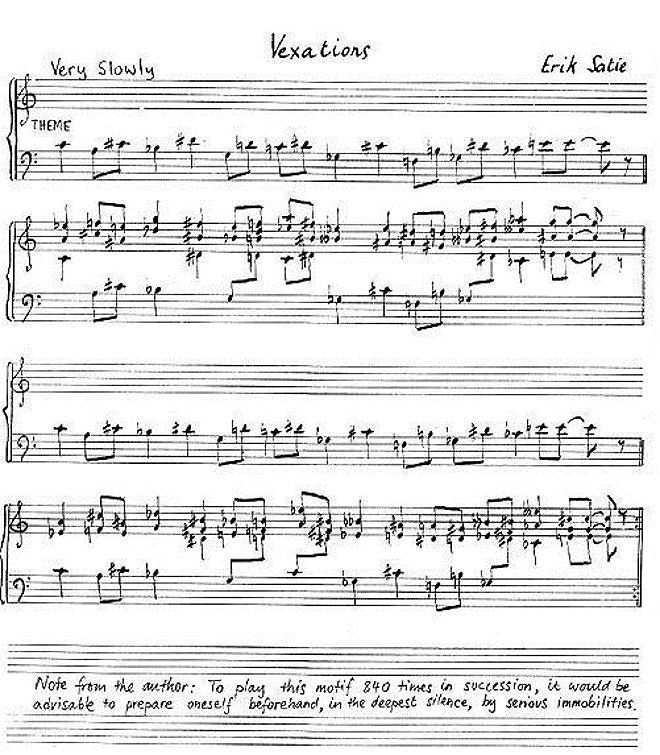
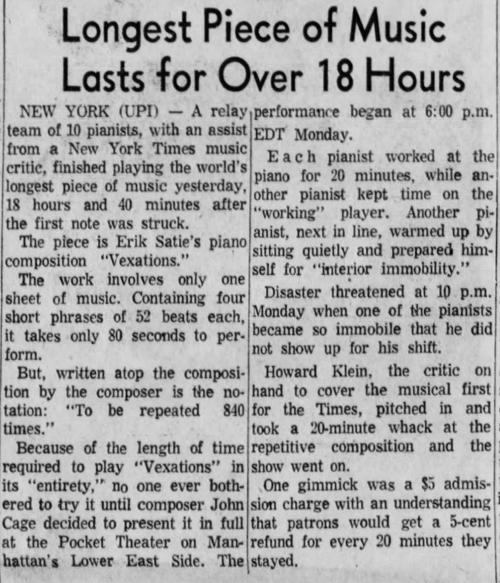
San Bernardino County Sun - Sep 11, 1963
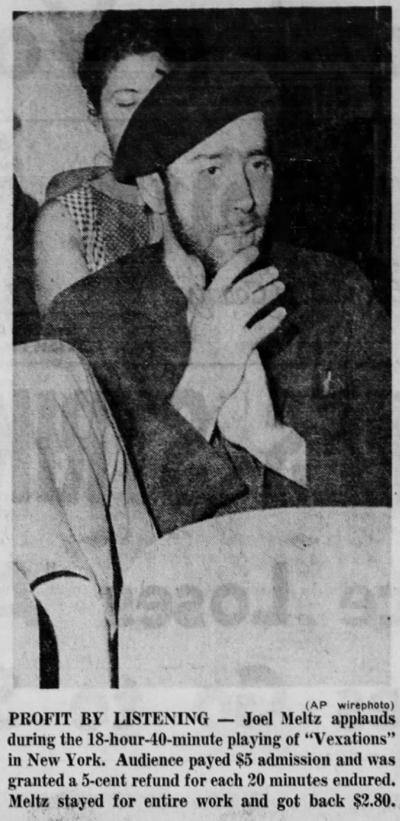
Posted By: Alex - Mon Apr 17, 2017 -
Comments (6)
Category: Boredom, Music, 1960s
The New Colony Six
"Groovin' is easy, if you know how!"
Their Wikipedia entry.
Posted By: Paul - Sat Apr 15, 2017 -
Comments (4)
Category: Music, Bohemians, Beatniks, Hippies and Slackers, 1960s
Numbered Towels for Hygiene
Somehow this reminds me of the set of seven panties with the days of the week embroidered on them.I could not find such a product still commercially available, but I did find a DIY version.
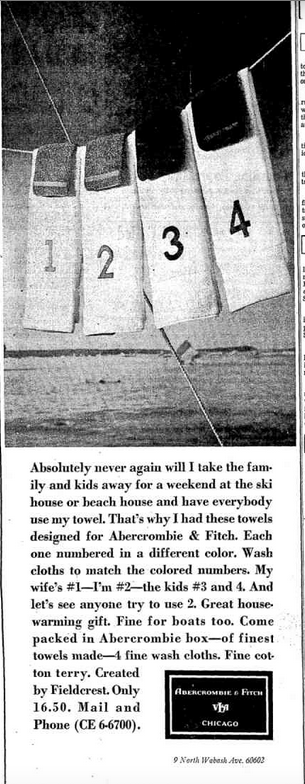
Original ad here.
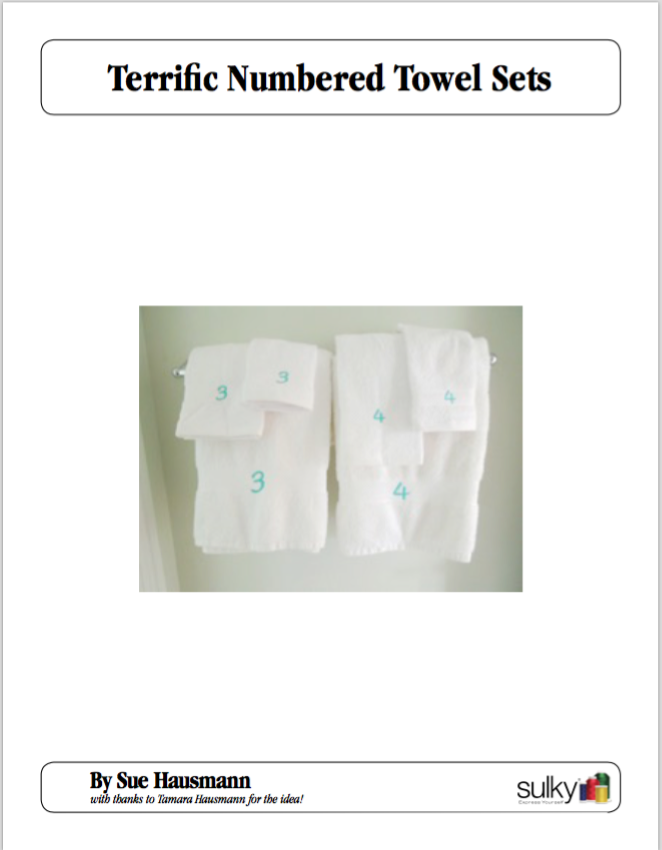

Posted By: Paul - Fri Apr 14, 2017 -
Comments (1)
Category: Domestic, Hygiene, Baths, Showers and Other Cleansing Methods, 1960s
Real-Life Dick Tracy
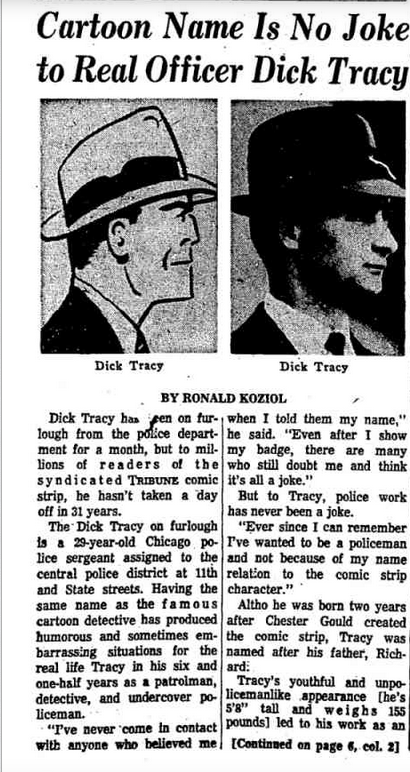


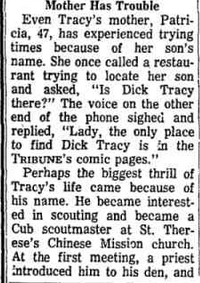
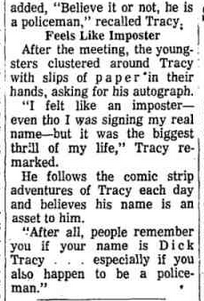
Original article here.
Posted By: Paul - Mon Apr 10, 2017 -
Comments (0)
Category: Law, Comics, 1960s
Operation Fragrant Cow
Back in the 60s, the U.S. Army employed scientists to sneak into Omaha stockyards and spray cows with deodorant. The logic behind this was to test how easy it would be for Soviet agents to spread hoof-and-mouth disease among American cows.Unfortunately, I can't find any more info about this operation, which is a shame because it raises so many questions. For instance, the important part of the operation must have been to see how easily they could gain access to the stockyards. So then, why bother to deodorize the cows? Was it just to add a touch of realism? Why not spray them with paint so that they could later count the "infected" ones?
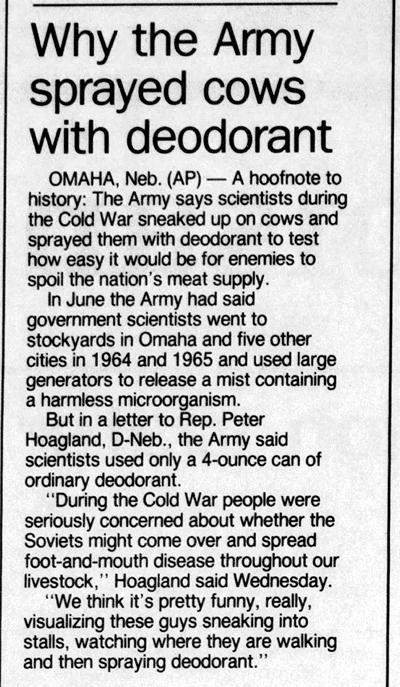
Southern Illinoisan - Aug 5, 1994
Posted By: Alex - Sun Apr 09, 2017 -
Comments (2)
Category: Military, Science, Cows, 1960s
The High School That Rocked
"Before touring became big business for promoters who elevated rock shows to an art, even name-brand bands played pretty much anywhere. It’s an interesting component of the early rock era that’s explored in the upcoming documentary The High School That Rocked!, which takes a look at one Connecticut school that somehow managed to lure a slew of classic-rock legends — including Cream, the Doors and the Yardbirds, among others."
Posted By: Paul - Sat Apr 08, 2017 -
Comments (1)
Category: Education, Music, 1960s
Mystery Gadget 46
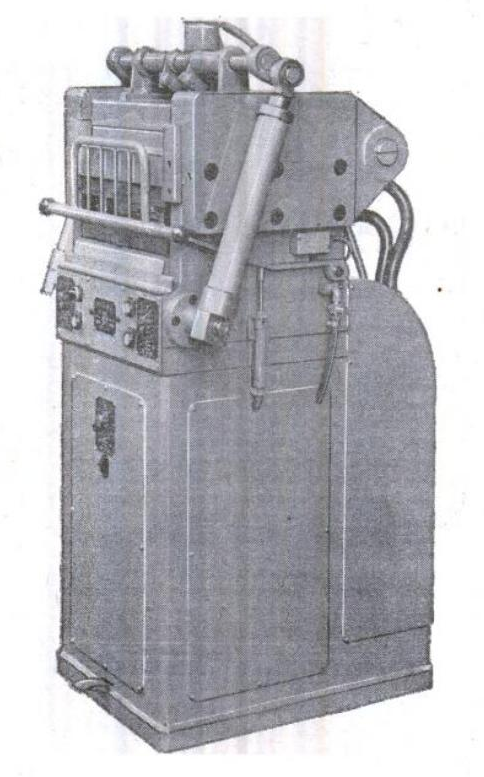
This machine produces what now?
The answer is here.
And after the jump.
More in extended >>
Posted By: Paul - Fri Apr 07, 2017 -
Comments (5)
Category: Technology, 1960s
Le Canned Dress
Irwin Silver put a dress in a can, gave it a frenchified name, and then sold these for $25 a pop. This was back in 1966, and it was a marketing gimmick about as cynical as you might guess. Silver was cashing in on the mid-1960s fad for anything canned, and he figured that if people were stupid enough to buy canned air (i.e. an empty can), perhaps they'd also buy a canned dress. Apparently he sold around 100,000 of them.More info from the St. Louis Post-Dispatch - Dec 14, 1966:
"I was being driven crazy by cans," he says. "Every time I turned around, I seemed to bump into a can. First I saw canned candles, then someone gave me a tin of canned air. I began to wonder why dresses couldn't be put up the same way."...
The fashions produced by Silver's company, Wippette, each weigh 4½ ounces, come packed in gay one-pound cans and are tagged with silver labels designed to look like the top of a can."

Image source: Cabinet magazine

St. Louis Post-Dispatch - Nov 26, 1966


Posted By: Alex - Tue Mar 28, 2017 -
Comments (4)
Category: Fashion, 1960s

| Who We Are |
|---|
| Alex Boese Alex is the creator and curator of the Museum of Hoaxes. He's also the author of various weird, non-fiction, science-themed books such as Elephants on Acid and Psychedelic Apes. Paul Di Filippo Paul has been paid to put weird ideas into fictional form for over thirty years, in his career as a noted science fiction writer. He has recently begun blogging on many curious topics with three fellow writers at The Inferior 4+1. Contact Us |




